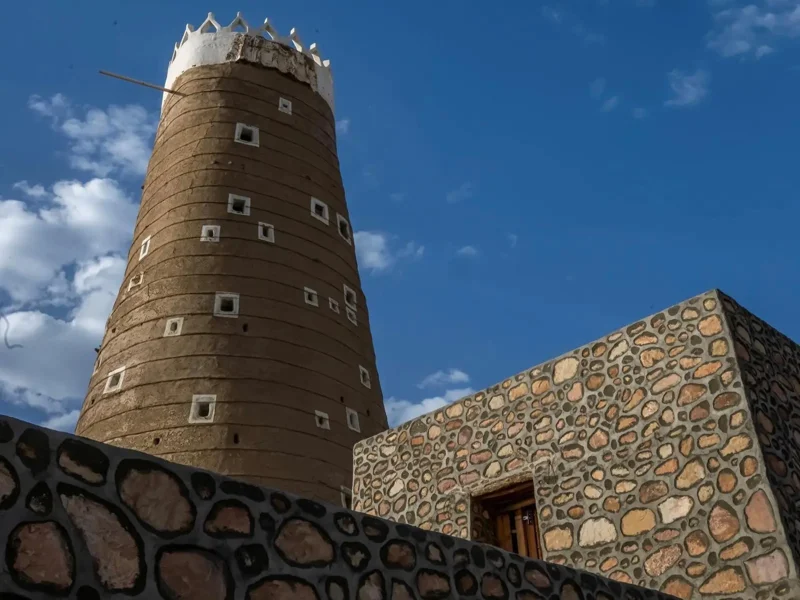Kasbat Al-Midmar in Badr Al-Janoub: A 300-year-old historical legacy of S. Arabia
The historic "Kasbat Al-Midmar" rises in the old district of the ancient Badr Al-Janoub Governorate, adorned with remnants of traditional mud houses scattered throughout. These structures stand as historical and cultural landmarks, reflecting a heritage of fortresses and traditional homes that dates back more than three centuries, SPA reports.

Kasbat Al-Midmar was built over 300 years ago in the traditional mudbrick architectural style known as the “Kasbah.” Typically constructed in village centers, these structures were used to monitor nearby farmland. They feature a circular shape with a wide base that narrows as it rises, resembling watchtowers—hence the name. Kasbat Al-Midmar consists of seven stories and overlooks the village and valley. It was recently restored under the supervision of the Heritage Commission in the region.
Vice President of the Najran Society for History and Archaeology Manea Naji Al Saad indicated that Badr Al-Janoub Governorate is home to several notable archaeological sites, including old mud houses and Qashla Castle, which stands atop Mount Al-Qahrah.
He added that the castle overlooks the governorate’s center from all directions, offering panoramic views of the village. Nearby lies the “Kasbah,” located among residential homes in the old district. He noted that it appears as a tall circular tower of seven stories, originally built as a watchtower to protect the old village of Al-Midmar.
Moreover, he stated that the governorate also features ancient carvings, inscriptions, and historic castles, including Al-Thaghr Palace, which dates back to the First Saudi State. It was built by order of Imam Saud bin Abdulaziz bin Mohammad in 1221 AH, according to Al Saad.
The stone structure consists of four stories and a watchtower, surrounded by a large stone wall with a deep central well, he said.
The Heritage Commission in the region continues to preserve traditional buildings and archaeological sites through various efforts in antiquities and urban heritage. These include protecting, documenting, and registering them in the National Antiquities Register, as well as overseeing their restoration and rehabilitation as part of the Kingdom’s rich cultural legacy.
